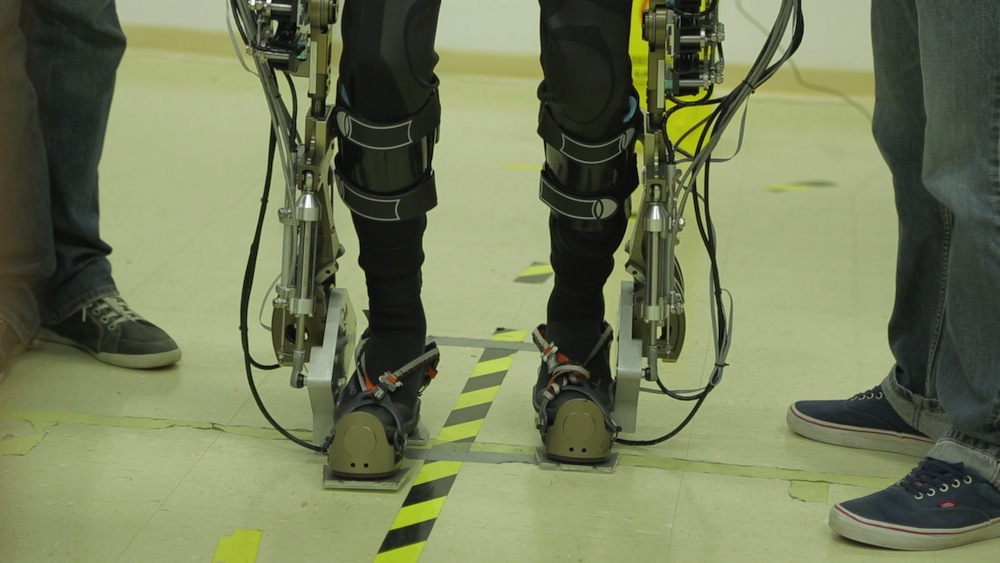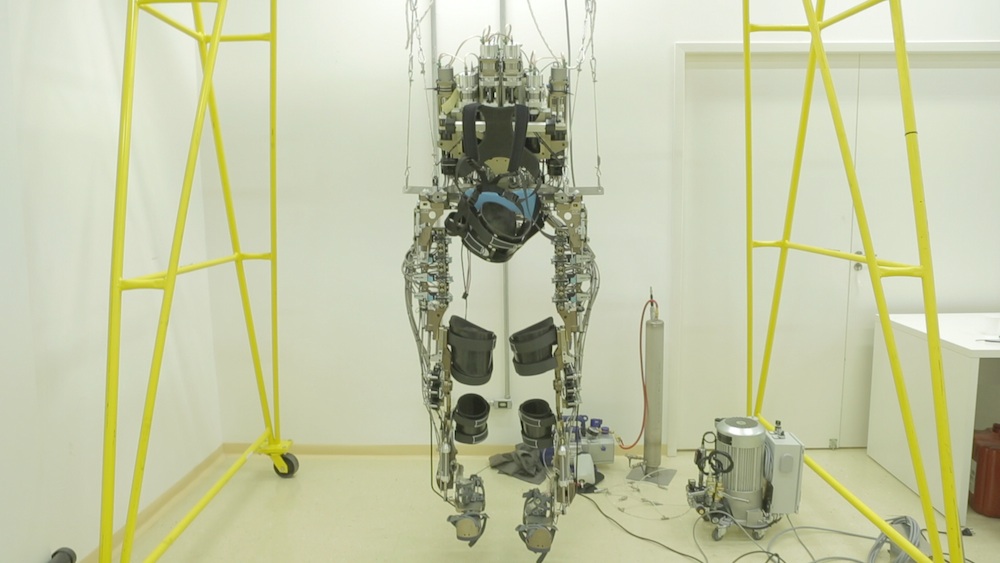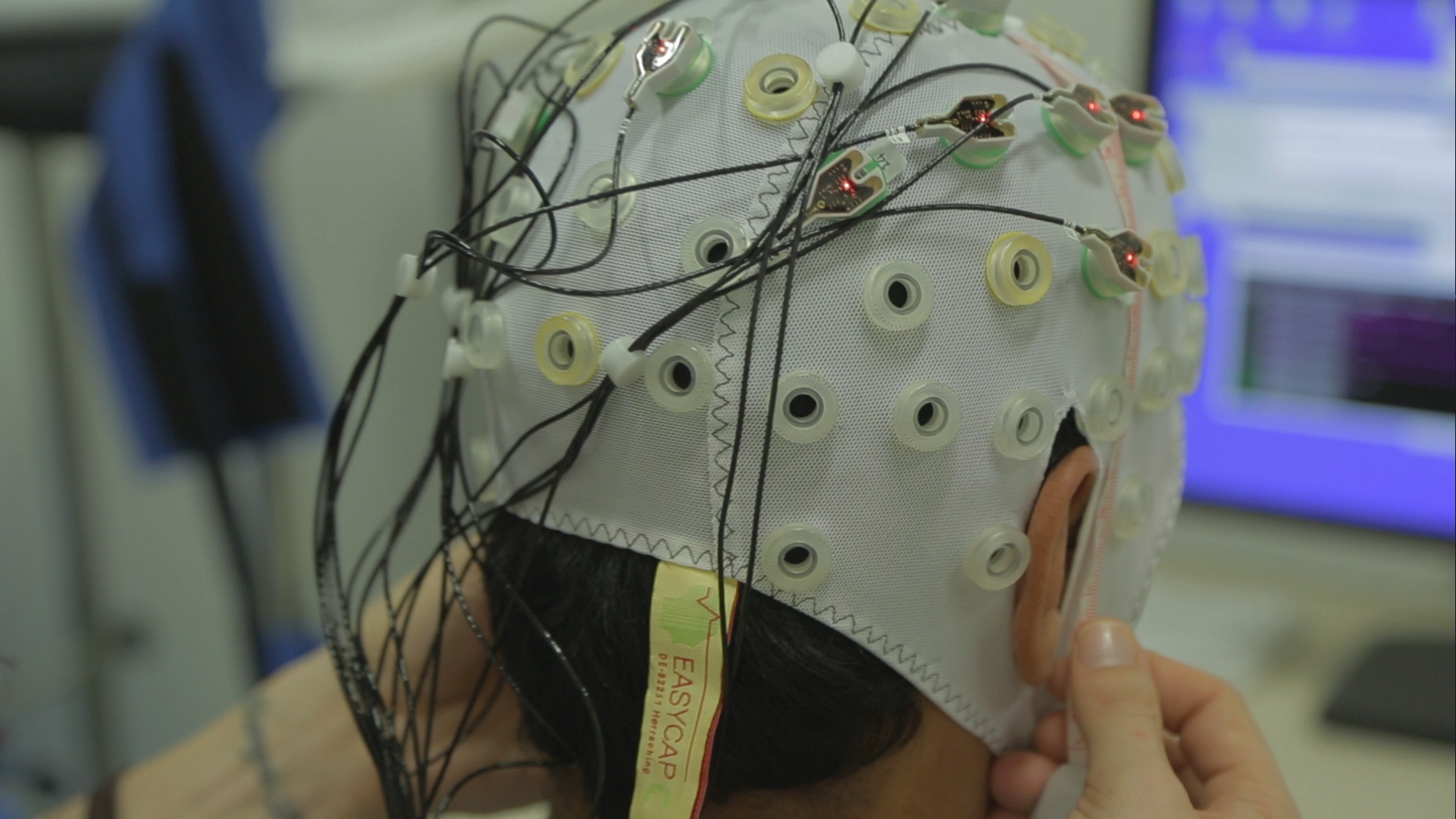World Cup Exoskeleton Demo: Hope or Hype?

If all goes according to plan, today (June 12) at the 2014 FIFA World Cup opening ceremony in Sao Paolo, Brazil, with hundreds of millions of people watching, a paralyzed person wearing a robotic suit will walk onto the field and kick the first ball of the tournament.
The person will be wearing a cap full of electrodes that will detect brain signals involved in controlling movement, and send them wirelessly to a laptop-size computer worn inside a backpack that will translate them into commands that enable the robotic suit, or exoskeleton, to walk over the grass and deliver the kick.
Researchers from Duke University in Durham, North Carolina, have spent years preparing for this ambitious demonstration, which builds upon widespread progress in both brain-machine interfaces, which connect the brain to devices in the outside world, and exoskeletons designed to assist people who have severe disabilities or are paralyzed. [Paralyzed Exoskeleton Wearer to Make World Cup First Kick (Video)]
If successful, the demonstration would no doubt be impressive, but just how big an advance it represents over current technology remains to be seen, experts say.
Other scientists expressed qualified excitement. "It's a major achievement, if it works," said Dr. Anil Raj, a research scientist at the Florida Institute for Human and Machine Cognition who is not involved in the Walk Again Project.
The researchers "have been making a big buildup — so I don't know what is actually going to take place — but it's going to be the first of its kind, if [they] can do it," Raj told Live Science.
A moving performance
Sign up for the Live Science daily newsletter now
Get the world’s most fascinating discoveries delivered straight to your inbox.
The unique demonstration is the brainchild of Miguel Nicolelis, a neural engineer at Duke University.
"We want to bring the subject of paralysis to the forefront of science, and propose solutions and move forward as quickly as possible," Nicolelis told Live Science.
The Brazilian-born researcher is not known for his subtlety. He has made a name for himself pursuing extravagant feats, such as decoding a monkey's brain activity to control an exoskeleton thousands of miles away; connecting the brains of two rats; and providing a sensation of touch to a monkey operating a virtual arm with its brain.
A few years ago, Nicolelis came up with the idea of having a paralyzed person walk onto the field at the World Cup wearing an exoskeleton controlled by his or her own brain signals, and make the first kick. This grew into the Walk Again Project, an international nonprofit organization that includes researchers from Duke University, the Swiss Federal Institute of Technology, and the Lily Safra International Institute of Neuroscience of Natal in Brazil.
Exoskeletons are not new — they have been around for years but are mostly used in hospital settings for rehabilitation. Researchers at the Cleveland Clinic in Ohio recently demonstrated that a paraplegic person who hadn't walked in years was able to walk again with the aid of an exoskeleton.

"Whereas before, in order to walk, the patient would need to be suspended from a ceiling mount, now, the patient can don an exoskeleton," said Dr. Fred Frost, chairman of the department of physical medicine and rehabilitation at the Cleveland Clinic.
But the idea that a patient could simply go from a wheelchair to walking again is a bit of a stretch, Frost told Live Science. Most exoskeletons are training devices for patients who have spinal-cord injuries, and are designed to help strengthen existing muscles and improve bowel and bladder function. [Stunning Soccer: The World Cup 2014 from Space (Photos)]
In contrast, the exoskeleton that will be used in today's World Cup demonstration will be brain-controlled, using noninvasive EEG, or electroencephalogram electrodes, to detect brain activity from the scalp. Much of Nicolelis' other work uses electrodes implanted inside the cortex of animals, which is thought to yield more precise control. However, it is much more invasive, and was not considered safe enough for the World Cup demonstration, Nicolelis said.
Mind-controlled machines
Several other groups have developed brain-machine interfaces capable of controlling computers, robotic limbs and even exoskeletons. José Contreras-Vidal, a biomedical engineer at the University of Houston who is not involved in the Walk Again Project, and his colleagues have already demonstrated that an exoskeleton can be controlled using EEG.
Just how big of an advance the World Cup demonstration will be depends on the level of control the kicker has, which will be difficult to tell by watching it on television, Contreras-Vidal told Live Science. If the user merely gives an on/off command to move, that would be less impressive than if the person were to actually control the individual movements of the joints.

The Walk Again exoskeleton may be somewhere in between. It will be a "fusion between the patient's will to move and the device," Nicolelis said, but the relative contributions of the person and the device will vary. For example, in some cases, the person will provide a simple command to start moving, stop moving or kick, and the device will perform the detailed mechanics, whereas in other cases, the person might be capable of controlling how fast the movements are performed.
Brain-machine interfaces represent a growing industry, but several exoskeletons are already on the market, costing between $75,000 and $150,000, researchers say. But the researchers designed and built their own robotic suit for the Walk Again Project demonstration. In addition to being brain-controlled, it will provide sensory feedback about what the feet are touching on the ground and where they are in space via artificial skin that contains pressure, temperature and speed sensors. The tactile information will be relayed to the wearer's arms through a vibrating shirt, the researchers said.
Nicolelis' team selected a total of eight paralyzed patients to train for the demonstration — six men and two women — based on their performance with the device. The patients range in age from their mid-20s to late 30s.
Training the volunteers took about three months — "surprisingly less time than I imagined," Nicolelis said. If all goes well, one of them could step out onto the field tonight.
"It's definitely feasible," Contreras-Vidal said. But "at the end of the day, it's going to be through peer-reviewed publications and conferences that we will know what is going on" at a technical level, he said.
Still, many things could go wrong during today's demonstration, but the thing Nicolelis is most worried about is rain, which could mess up the electronics. "Rain would not be good," he said, "but the forecast is for a sunny afternoon."
See here for information about how to watch the World Cup live.
Follow Tanya Lewis on Twitter and Google+. Follow us @livescience, Facebook & Google+. Original article on Live Science.










